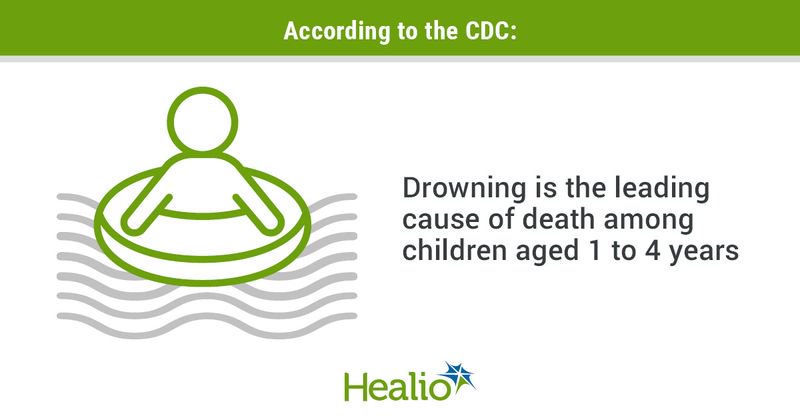Drowning deaths on rise in US after decades of decreasing rates
Key takeaways:
- Drowning deaths have surpassed 4,500 every year since 2020.
- Drowning death rates for Black people were 28% higher in 2021 than in 2019.
Following decades of decreasing rates, unintentional drowning deaths have increased in the United States since the COVID-19 pandemic, CDC researchers reported Tuesday.
Some of the highest rates of drowning occurred among groups that were already disproportionately affected by drowning, such as young children and Black people.

“This is a particularly timely issue with summer approaching when many of us are likely to be in the water,” Debra Houry, MD, MPH, the CDC’s chief medical officer, said in a press briefing.
“Drowning can happen to anyone at anytime, anywhere there is access to water. It can be quick, silent and deadly,” Houry said, noting that drowning remains the leading cause of death for children aged 1 to 4 years.
A study of data from the National Vital Statistics System identified 4,067 unintentional drowning deaths overall in 2019, 4,589 in 2020, 4,677 in 2021, and 4,509 in 2022. The rate of deaths per 100,000 people increased significantly during that time.
Rates were highest among children aged 1 to 4 years each year, climbing from 2.4 to 2.7 per 100,000 children between 2019 and 2020. The rate increased to 3.1 per 100,000 children in both 2021 and 2022 — an increase of around 30% over 2019.
The study’s authors, including Tessa Clemens, PhD, a health scientist in the CDC’s Division of Injury Prevention, said the increase in drowning deaths among young children “might partly reflect disruptions caused by the COVID-19 pandemic.”
“We know that many public pools closed during the COVID-19 pandemic, which limited the availability of swimming lessons,” Clemens said during the briefing. “Once pools reopened, many facilities faced shortages of trained instructors and lifeguards, which further reduced availability of swimming lessons and safe swimming areas. There are also social and structural barriers that limit people's access to basic swimming and water safety skills training,” including cost and unavailability in certain communities.
Regarding swimming lessons, Houry said children “can never be too young to really have that exposure to water.”
“We recommend swim lessons really for those ages 1 to 4, when there's the highest drowning risk,” Houry said. “That's a great time to really have those swim lessons so that young children develop those skills and don't have a fear of water.”
The AAP says swimming lessons can begin at age 1 year, and that most children are ready for lessons by age 4 years.
The new study also found that 54.7% of surveyed U.S. adults had never taken a swimming lesson, with Black and Hispanic Americans disproportionately represented among that number compared with white Americans. The rate of unintentional drowning deaths among Black people increased by more than 20% during the pandemic.
Clemens said that even with availability and accessibility of swimming lessons, people may be hesitant to participate because of “complex social and cultural factors,” such as a fear of water or feeling that certain places “are not welcoming places.”
“Important historical factors also contribute to drowning rates, including racial segregation,” Clemens said. “With segregation, there were fewer swimming options available for Black people, pools were often poorly maintained or too shallow for swimming. After racial desegregation, many public pools closed, and fewer new pools were built. Further private swimming clubs emerged that restricted access for Black people and people from other racial and ethnic groups through discriminatory membership requirements.”
These factors and many others, Clemens said, influence current attitudes about swimming and impact people's participation in swimming lessons.
“Everyone should have access to basic swimming and water safety skills training,” Clemens said. “Addressing social and structural barriers that limit access to this training could advance health equity and reduce drowning deaths.”
References:
Clemens T, et al. MMWR Morb Mortal Wkly Rep. 2023;doi:10.15585/mmwr.mm7320e1.
